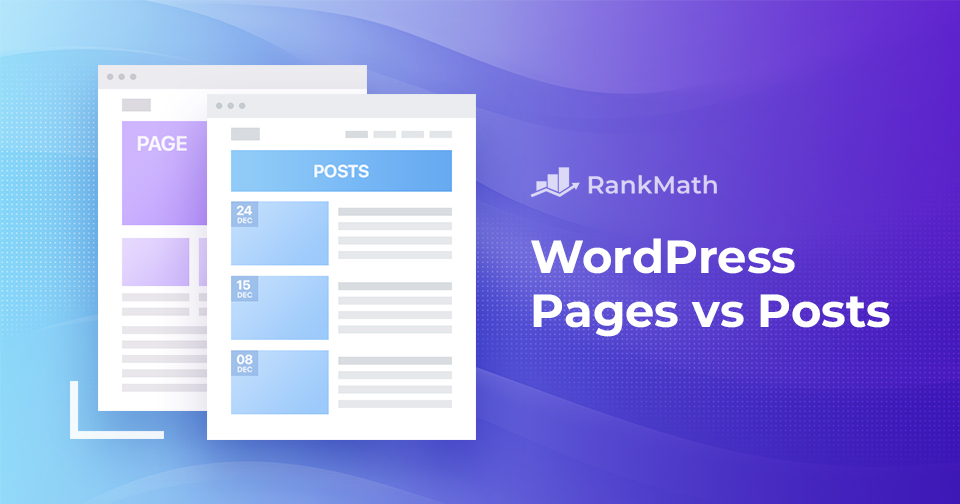When you’re setting up your WordPress site, one of the first questions you’ll run into is: should I use a page or a post? At first glance, they might look the same, but they serve very different purposes.
Think of it this way: pages are like the foundation of your website, your About, Contact, or Services sections that don’t change often. Posts, on the other hand, are where your fresh, ongoing content lives, like blog updates, news, or articles that keep your site active and engaging.
Understanding the difference between the two is key to structuring your website the right way. If you get it right from the start, you’ll not only make your site easier to manage but also create a smoother experience for your visitors.
In this post, I’ll walk you through WordPress pages vs posts and help you decide which one works best for your website’s goals.
So, without any further ado, let’s get started.
Table Of Contents
1 Understanding WordPress Pages vs Posts
Is the whole “pages vs. posts” thing throwing you a curveball?
Don’t worry; let’s understand the basic details of pages vs posts.
1.1 What is a WordPress Page?
Think of pages as the steady, permanent parts of your website. They’re like the foundation, content that doesn’t change often and serves a clear purpose.
Examples of pages:
- Contact – how visitors can reach you.
- Home – your site’s front door.
- About Us – your story or brand background.
The URL for a page looks like this: http://yourwebsite.com/page-title/
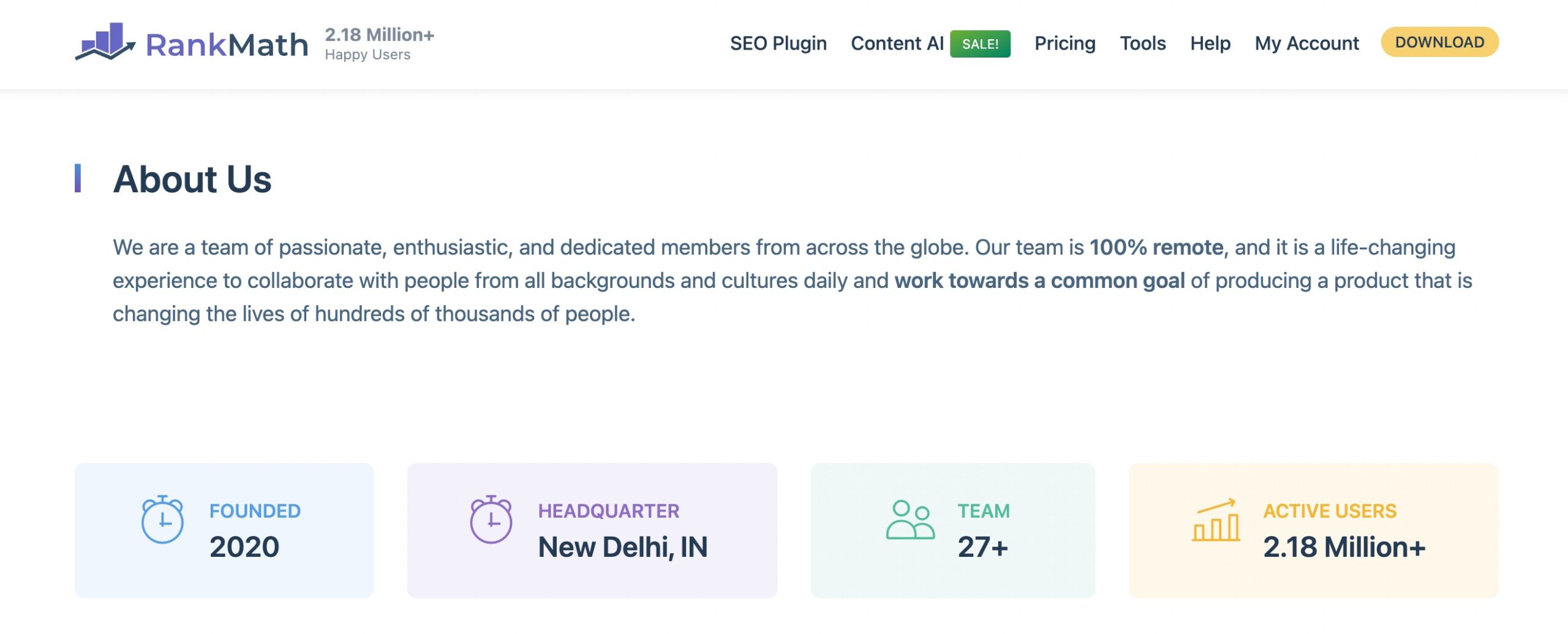
1.2 What is a WordPress Post?
Now, posts are completely different. They’re meant for fresh, timely content, the content you publish regularly to keep your site alive and engaging.
Examples of posts:
- Blog articles
- News updates
- Tutorials or guides
The URL for a post looks like this: https://yourwebsite.com/blog/post-title/
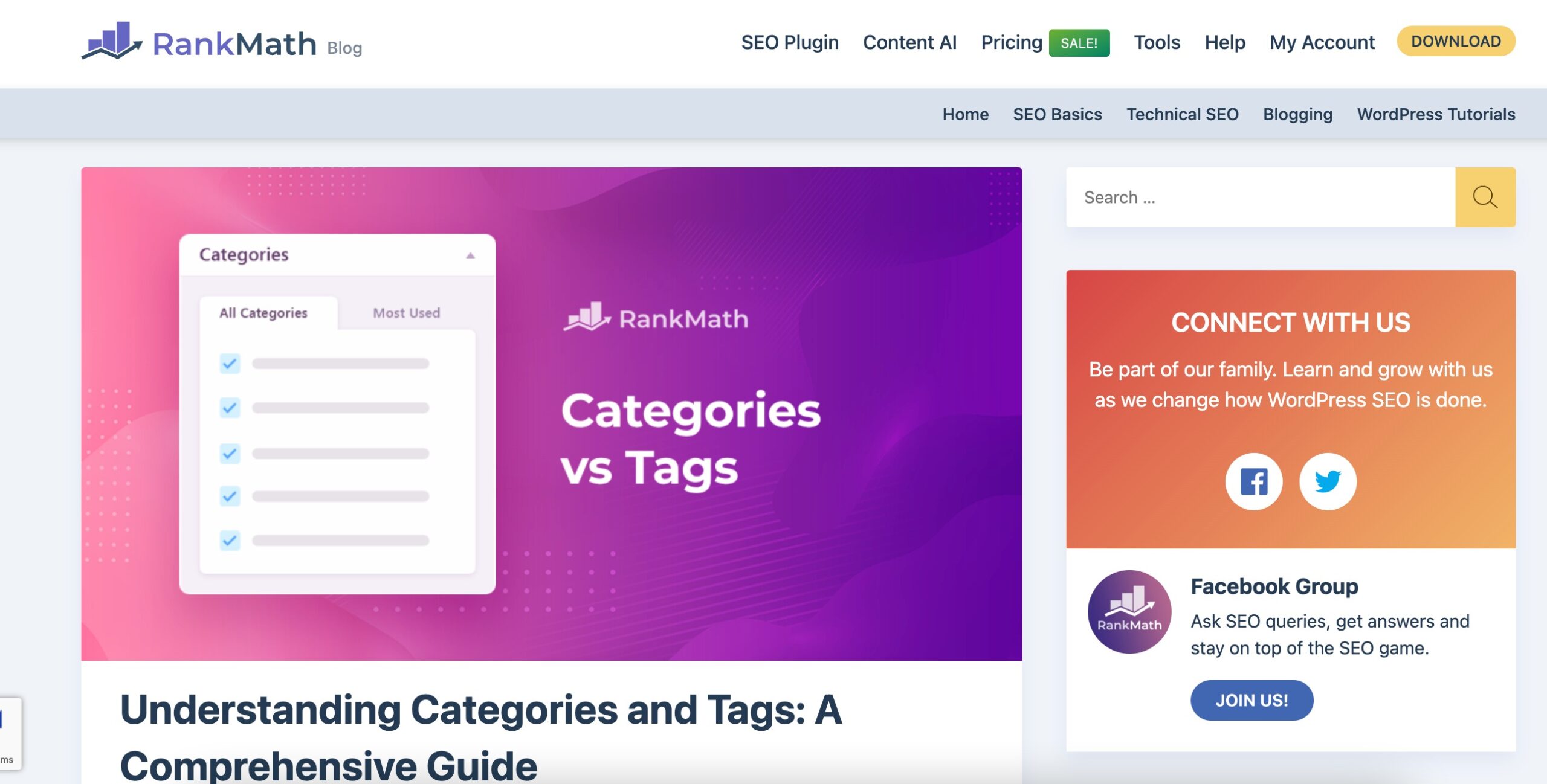
2 How to Create Posts and Pages in WordPress
Now that you understand the difference between pages and posts, let’s walk through how to create them in WordPress.
2.1 Creating WordPress Pages
To create a page, navigate to Pages → Add New Page section from your WordPress dashboard.
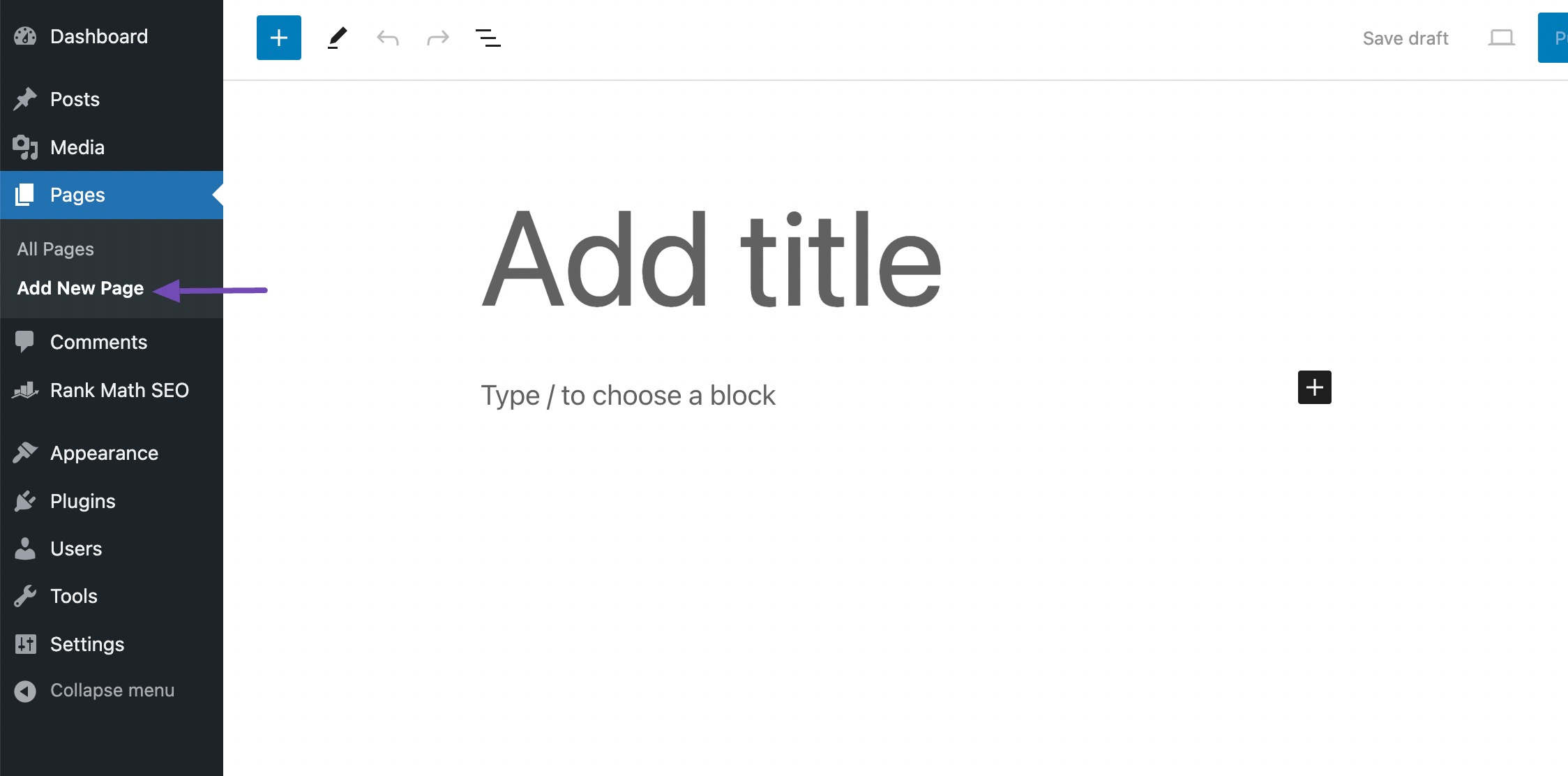
In the page editor, you give your page a title, maybe like ‘Contact’ or ‘About Us.’
If you want to organize the pages, you can make parent and child pages underneath. The editor lets you add text, images, and more, making it pretty straightforward.
You can preview your page, save it as a draft, and once you’re happy with how it looks, click the Publish button. There you go – your page is live on your site!
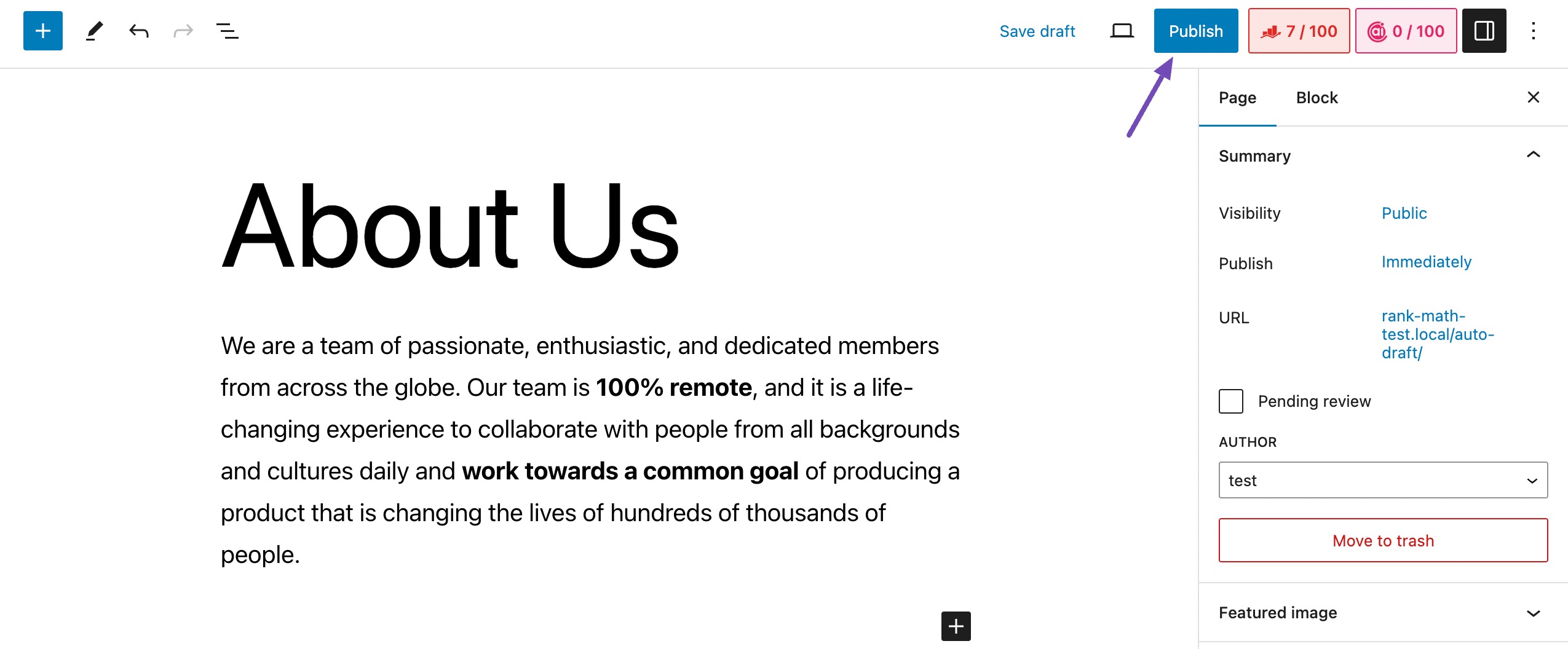
2.2 Creating WordPress Posts
To create a post in WordPress, navigate to Posts → Add New Post section from your WordPress dashboard.
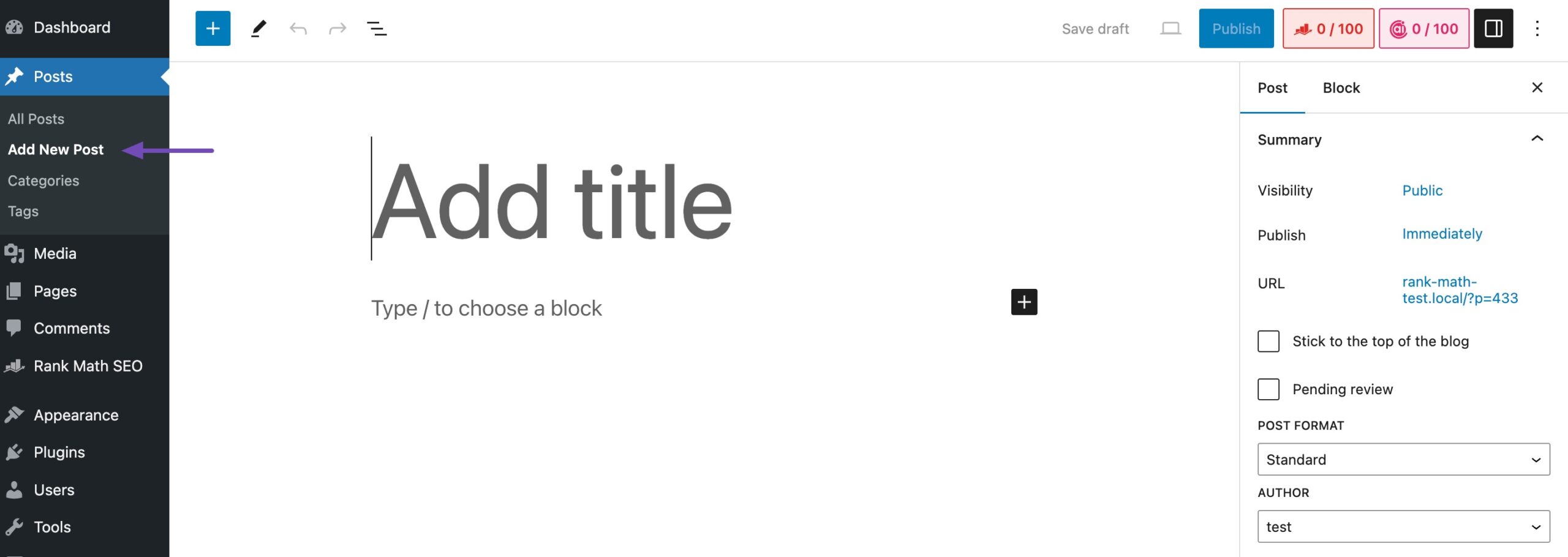
Also, the sidebar on the right will include different options under the Post tab. You will see new sections for adding categories and tags, as shown below.
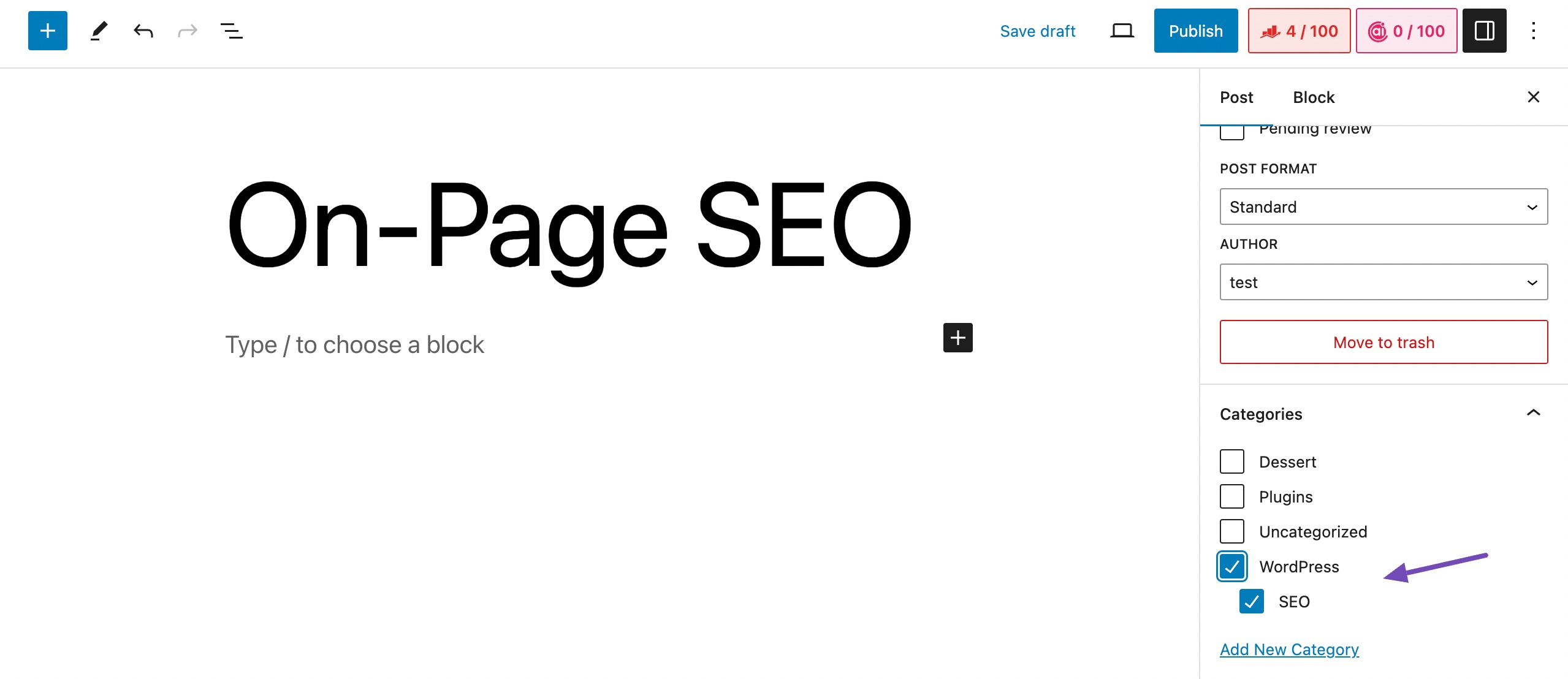
You can also include a featured image. If your theme allows this option, it will appear as a thumbnail on your blog page and social media posts.
Like pages, you can preview your post, save it as a draft, or click Publish once it is ready to go live.
If you wish to remove a post/page, you can use Rank Math’s link counter module and search console to identify internal links and update them accordingly. Refer to our video to safely remove posts or pages without hurting SEO.

3 Pages vs Posts in WordPress — What Are the Main Differences?
When you’re building your WordPress site, knowing the difference between pages and posts is key. Get this right, and your website will feel more organized, easier to navigate, and better structured for both your visitors and search engines.
For indexing, Google treats pages and posts the same. The difference lies in how you use them on your site.
Let us now discuss the differences between pages vs posts.
1. Posts are Timely, and Pages are Timeless
Posts (Timely): Blog posts are created for time-sensitive content. These could be news updates, weekly articles, or any content that evolves with time. For instance, a fashion blog might have posts about the latest trends, which change frequently.
Pages (Timeless): Pages, on the other hand, host evergreen content. Think of them as the static foundation of your blog. As mentioned, your ‘About Us’ or ‘Contact’ page remains relevant over a more extended period, providing stable and unchanging information.
2. Posts are Meant to be Shared on Social Media, and Pages are Not
Posts (Social Media Sharing): Blog posts are designed for sharing on social media platforms. They usually have social sharing buttons, encouraging your readers to spread the content. For example, a travel blog might share posts about a recent adventure on Facebook, Twitter, or Instagram.
Pages (Not Shared as Much): Pages, being static, aren’t typically shared on social media platforms. Instead, they serve as reference points within your blog, guiding your readers to essential information.
3. Posts are Organized Using Categories and Tags, While Pages are Hierarchical and Organized as Child and Parent Pages
Posts (Categories and Tags): Blog posts are organized using categories and tags, creating a systematic way to navigate content. For instance, a food blog post about dessert recipes might be categorized under “Desserts” and tagged with “Chocolate.”
Pages (Hierarchical Organization): Pages follow a hierarchical structure. You can have parent pages and child pages, creating a logical order. An example might be a ‘Services’ page (parent) with ‘Web Design’ and ‘Content Writing’ as child pages underneath.
4. Posts Have an Author and Published Date, While Pages Do Not
Posts (Author and Date): Blog posts display the author’s name and publication date. This information helps readers understand the context and recency of the content. For instance, a tech blog post about the latest gadgets might have the author’s name and a recent publish date.
Pages (No Author or Date): Pages don’t typically display an author or a published date because their content is timeless. They provide stable, relevant information regardless of when it was initially created.
4 Pages vs Posts — Which is Better?
So, which is better for your site: pages or posts? The truth is, it all depends on what you’re building.
- If you’re creating a business website, you’ll rely more on pages for your core information, like About Us, Services, and Contact.
- If you’re running a blog or sharing updates regularly, then posts are your go-to. They keep your content fresh and engaging.
But here’s the real secret: the best websites use both. Pages give you a stable, organized structure, while posts keep your site active and help you connect with your audience through new content.
For instance, imagine you run a photography business.
- Your Services, Portfolio, and Contact sections will be pages.
- Your tips on lighting, editing tutorials, and client stories will be posts.
When you use pages and posts together, your site becomes both professional and engaging.
Refer to our dedicated article on website structure to improve user experience and boost your site’s visibility in search engines.
5 Frequently Asked Questions
Can I use posts to create a static homepage on my WordPress site?
While possible, it’s not the typical use for posts. Pages are more suitable for creating a static homepage, showcasing timeless information.
Are there any limitations to the number of pages or posts I can have on my WordPress site?
While there’s no strict limit, having too many pages or posts can affect performance. Proper organization and navigation structures help manage a large volume of content effectively.
How do themes affect the appearance of pages and posts?
Themes in WordPress control the overall look and feel of your site, affecting the appearance of both pages and posts. They define elements such as layout, colors, and fonts.
Can I convert a page into a post, or vice versa, in WordPress?
While you can copy content between them, there isn’t a direct conversion feature. It’s generally more efficient to plan your content strategy and choose the appropriate type from the start.
6 Conclusion
By now, you can see that pages and posts in WordPress each play a unique role. Pages give your website a good foundation with timeless information, while posts keep it fresh, active, and engaging.
When you’re building your site, don’t think of it as choosing one over the other. Instead, focus on how you can combine both to create a structure that works for your goals. Use pages for the must-have sections, like About, Services, or Contact, and posts for the content you’ll update regularly, like blogs, news, or tutorials.
If you approach it this way, you’ll have a website that feels both professional and dynamic, giving your visitors the best possible experience.
So, now it’s your turn; decide where you’ll use pages, where you’ll use posts, and start shaping your WordPress site into something that truly fits your vision.
If you like our pages vs posts article, let us know by tweeting @rankmathseo.
